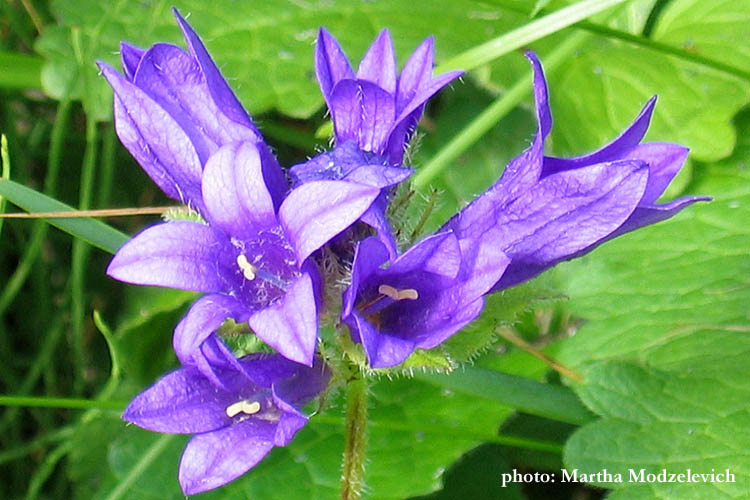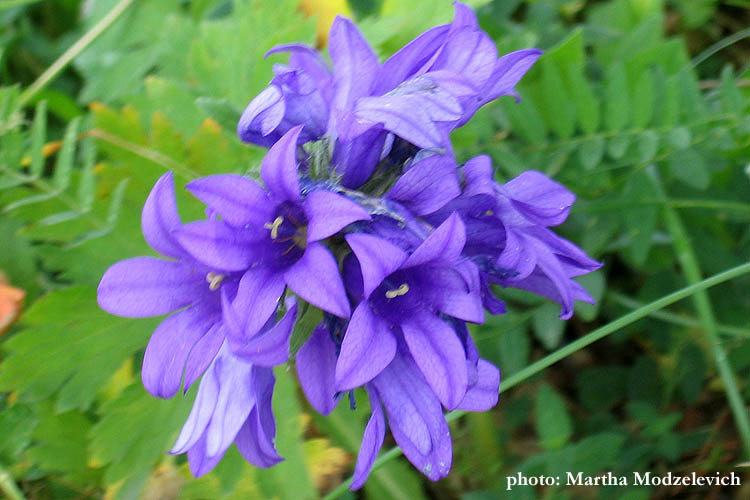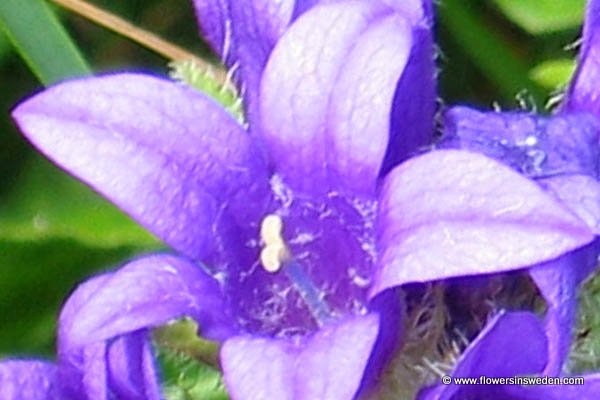
| Scientific name: | Campanula glomerata L. | |
| Swedish name: | Toppklocka, Mosis rosor | |
| English name | Clustered Bellflower | |
| German name: | Knäuel-Glockenblume | |
| Nederlandse naam: | Kluwenklokje | |
| Plant Family: | Campanulaceae, SE Klockväxter, UK Bellflower family |

|
| Life form: | Perennial | |
| Stems: | Height 20–80 cm, unbranched, slightly angular, lower part almost round, sparsely haired–almost glabrous, often dark reddish brown | |
| Leaves: | Alternate, simple | |
| Flowers: | Violet | |
| Flowering Period: | July-August | |
| Fruits: | Capsule subglobose or obovoid-conical, ca. 4.5 mm; seeds oblong, compressed, 1–1.5 mm | |
| Habitat: | Forest, thickets, coast, pastureland, meadows, sellements |

Location: Hammarstrand Camping Derivation of the botanical name: Campanula is diminutive of Late Latin campāna, bell (New Latin: a little bell), glomerata, glomeratus, "clustered", meaning: to gather into a ball.

Location: Hammarstrand Camping |